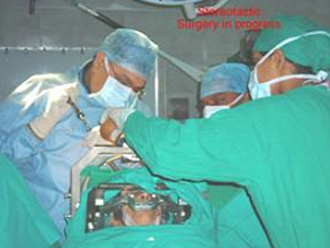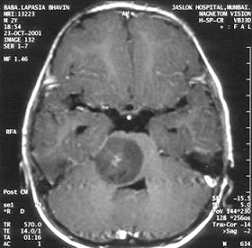Stereotactic surgery is a minimally invasive procedure. It makes use of a three-dimensional coordinate system to accurately locate small targets within the brain and subsequent procedures such as stimulation, lesioning, implantation ), ablation etc. can be performed.
Theoritically any organ inside the body can be subjected to stereotactic surgery. Difficulties in putting up a reliable frame of reference (such as bony landmarks which has a constant spatial relation to soft tissues) however, mean that its applications have been limited to brain surgery.




